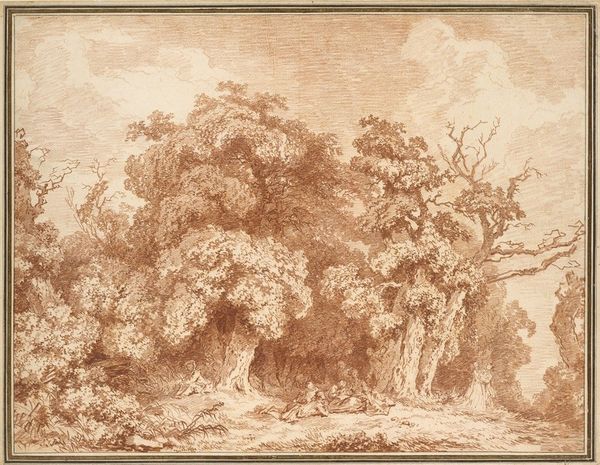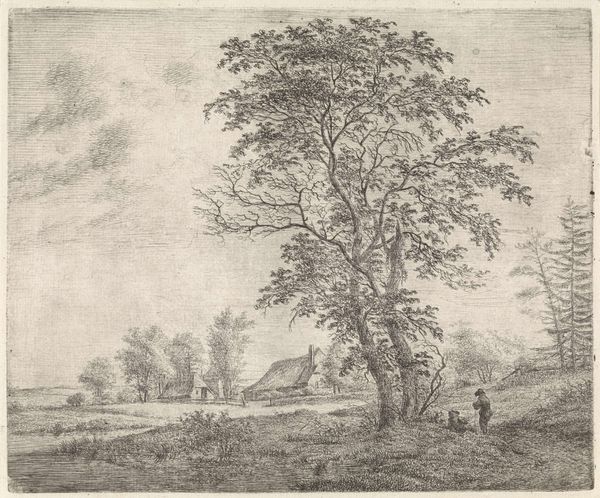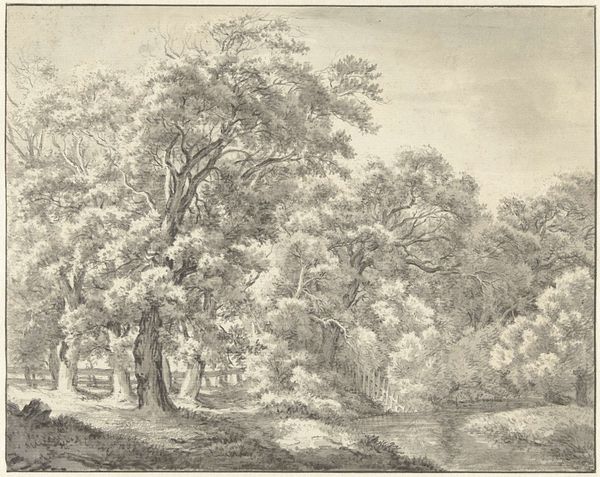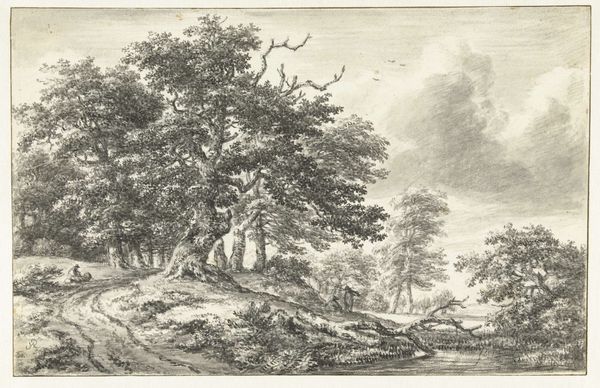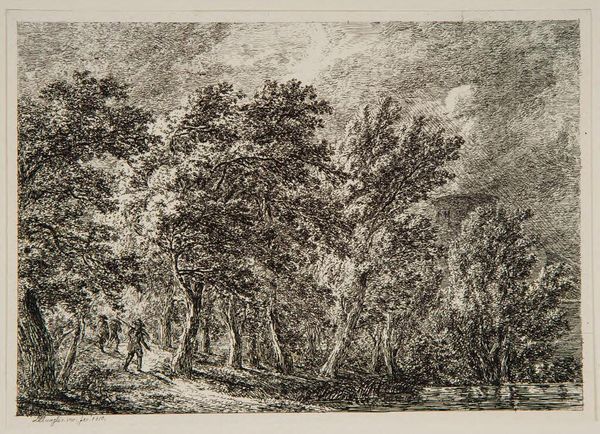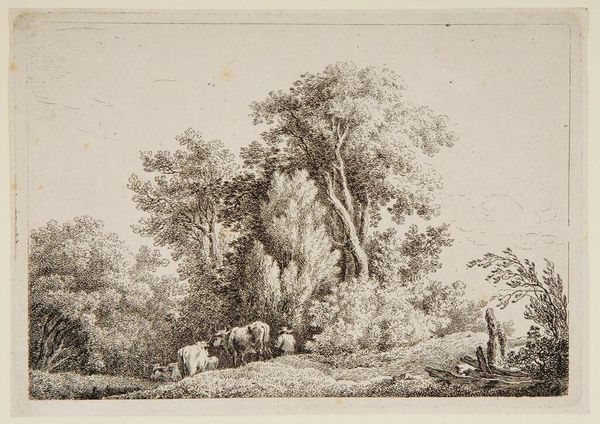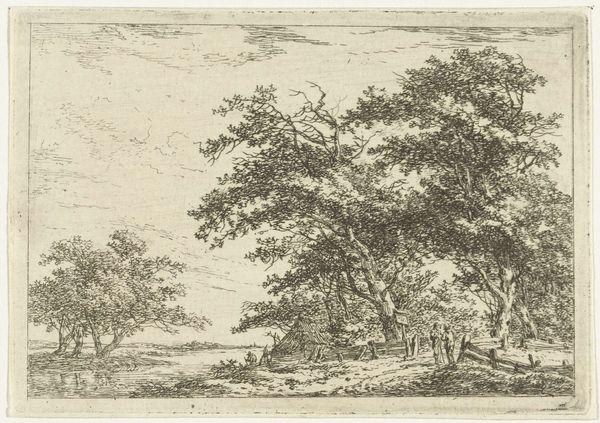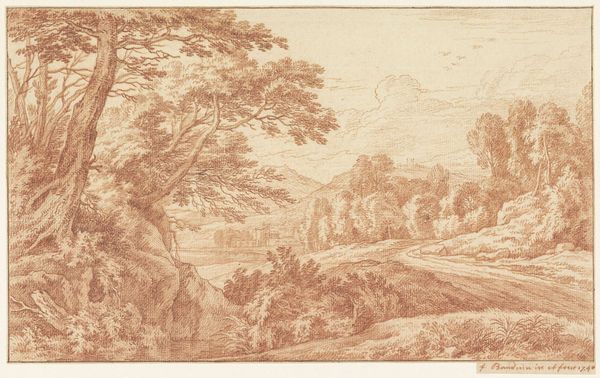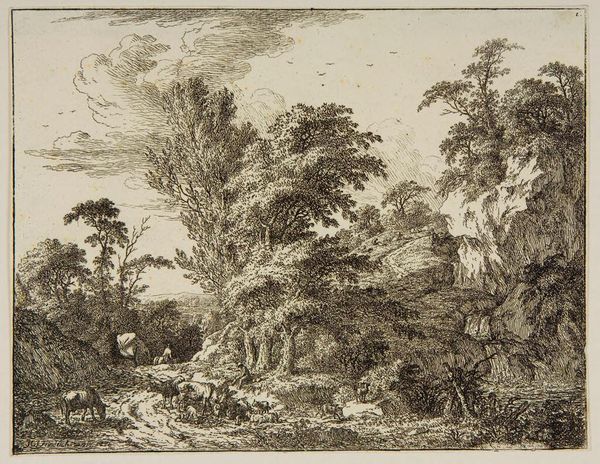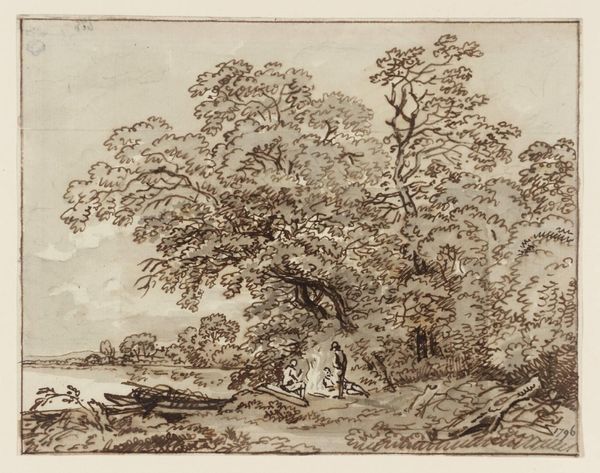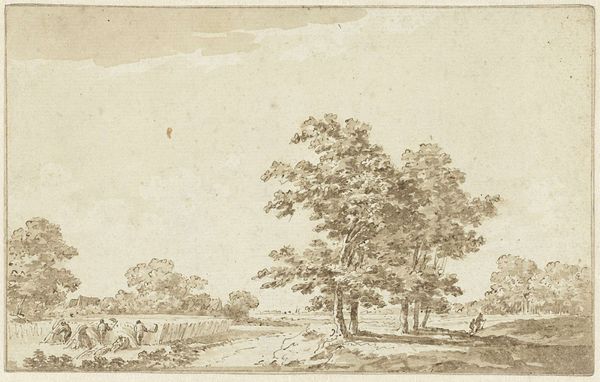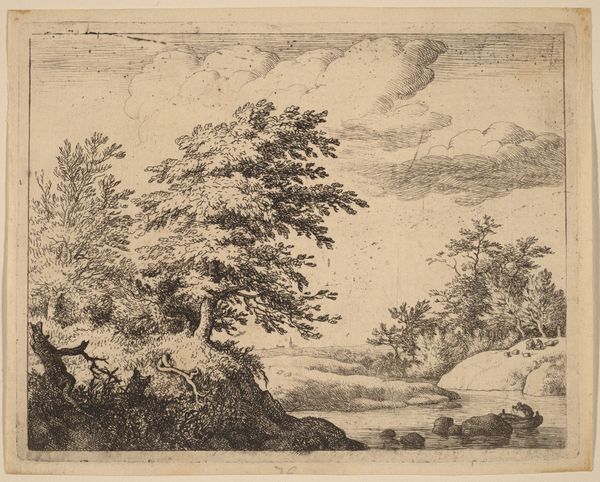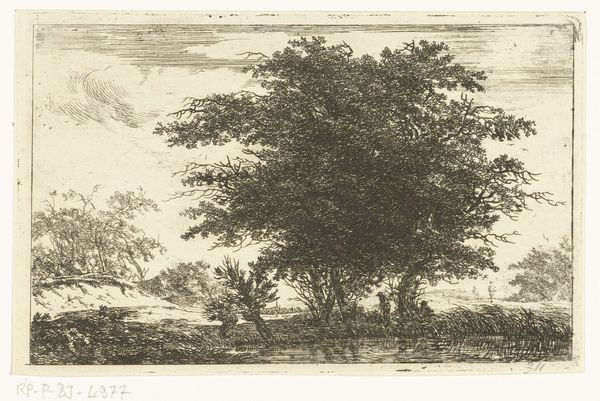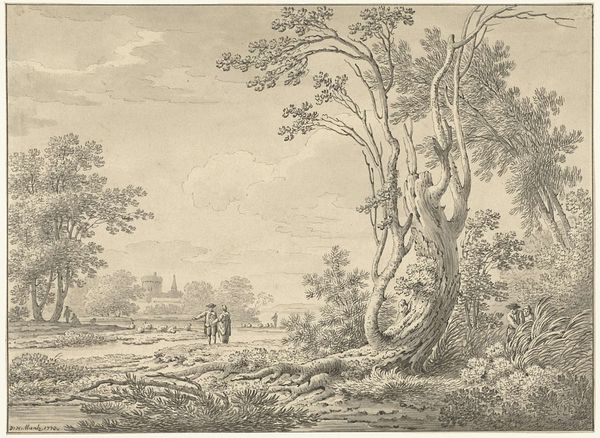
drawing, etching, plein-air
#
drawing
#
etching
#
plein-air
#
landscape
#
etching
#
line
#
rococo
Copyright: Public Domain: Artvee
Editor: So, this is Jean-Honoré Fragonard’s "A Stand of Cypresses in an Italian Park," an etching from around 1760. There's a delicate, almost dreamy quality to the scene – like a fleeting memory. How would you interpret this work? Curator: This seemingly tranquil landscape resonates with complex social and political undertones of its time. The Italian park wasn't just a place of leisure; it was a constructed space reflecting power, class, and the romanticization of nature by the elite. Editor: Interesting, I wouldn't have considered that. How do the cypresses fit into that interpretation? Curator: Cypresses are often associated with mourning and remembrance. Here, they could symbolize a lament for a perceived idyllic past, especially as the French aristocracy was on the cusp of revolution. Consider, too, how this curated 'natural' space contrasts with the realities of poverty and social inequality just beyond the park’s walls. Editor: So, it's less about the beauty of nature and more about… social commentary? Curator: Precisely. Fragonard, consciously or not, is engaging in a visual dialogue about privilege, artificiality, and the impending disruption of the social order. What do you notice about the scale and positioning of the figures within the landscape? Editor: They're small, almost insignificant compared to the trees. Curator: Right. This dwarfing effect could subtly critique the individual's power against the backdrop of societal structures, or even the overwhelming forces of history. Editor: That's fascinating. I'll never look at a landscape the same way again! Curator: Exactly! By examining the historical context and potential social critiques, we can peel back layers of meaning in even the most seemingly straightforward artwork.
Comments
No comments
Be the first to comment and join the conversation on the ultimate creative platform.
